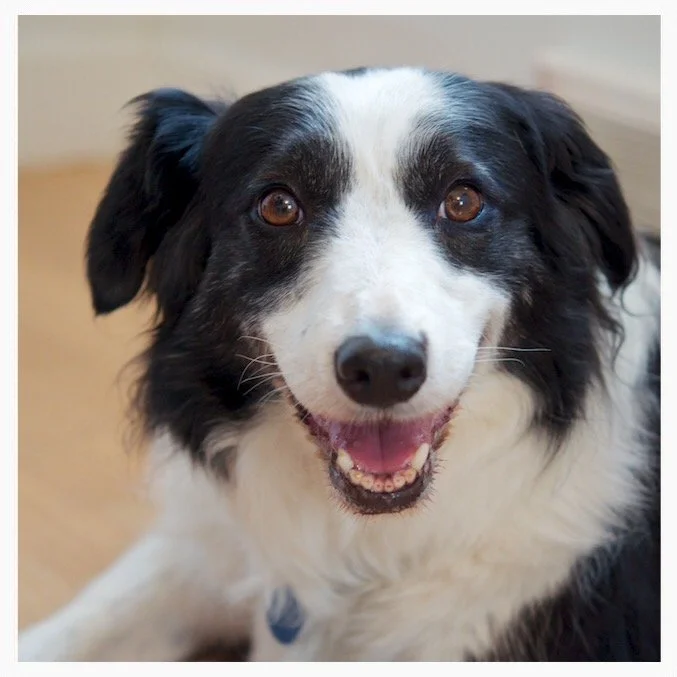Our first days together
Catch up on episodes 1, 2, and 3 of the story.
The shelter agreed to let Bryan and me adopt Vida, even though she didn’t meet the criteria for adoption. She was scheduled to be spayed, a requirement before she could leave the shelter, but because the medical team was backed up, she had to wait several days.
Each morning when I got to work, I went down to her kennel and coaxed Vida up to my office. She spent each day hiding under my desk. She was scared of me, but deep down I think she sensed I would protect her.
During her spay surgery, the veterinarian discovered Vida had pyometra, an infection in the uterus which is deadly if left untreated. She had been rescued just in time.
After Vida recovered from surgery, we were allowed to bring her home. I wish it was the start of a happily-ever-after story, but the truth is, Vida was terrified, and her emotional scars were deep and numerous. Her recovery was challenging for all of us.
Vida had never been inside of a house, and everything about it was scary. She was also scared of Bryan and me, and leery of our other dogs. In her previous life at the puppy mill, dogs could be companions, but they were also competition for resources, especially food. She’d seemingly never used a bowl, so even her mealtime experience was new. In the beginning, the only way we could get her to eat was to scatter her food on the floor.
Not ready to join the other dogs in play, Vida often sat against a wall and observed her overwhelming new life.
We made Vida a fort in the living room, moving furniture and blankets into the corner to create a space where she would feel safe, and be able to observe all of us from a distance. If we tried to pet her, she’d freeze in fear.
A small part of me wondered if we were doing the right thing for Vida, and questioned whether the kindest choice would have been to humanely euthanize her. Her spirit was so far gone, and daily life presented so many challenges.
But the intuition I shared with Vida told me she wanted to keep fighting, that she wanted the chance to become a regular dog.
One day at work, a well-meaning colleague who worked in a different department approached me and said she’d heard that we adopted Vida. She warned me it wouldn’t work out. She believed Vida had too many strikes against her – the trauma she experienced in a puppy mill, the fact that she was deaf, and that she was the third dog in our house (she believed the dog-to-dog dynamics wouldn’t work).
A wave of worry washed over me, but I could hear Vida’s voice in my head telling me she would prove her wrong.
I was beginning to learn just how mighty Vida was. She’d make two steps of forward progress, and then end up a step back. But she persisted in everything she aimed to do. I could see she wanted to be like other dogs and have basic life skills and confidence, and the ability to socialize with people. For most dogs these are rudimentary achievements, but for dogs with Vida’s history they are incredibly difficult.
Slowly but surely, she made progress. As the days turned into months and then into years, Vida gently evolved. Her eyes started to shine, and she began to master the things that had previously scared her and seek out activities she enjoyed. We celebrated each milestone with her: Eating her first meal from a bowl, going for a walk, letting a stranger pet her.
The little accomplishments became bigger accomplishments, and Vida’s confidence and happiness grew along with her circle of friends and admirers. She started showing the world how mighty she was.
She was building a legacy.
To be continued…



